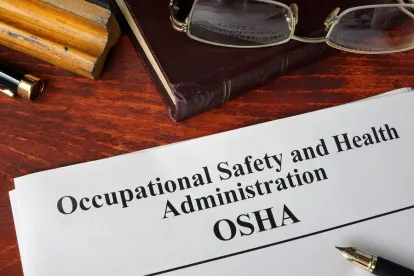Last week the U.S. Court of Appeals for the Eleventh Circuit affirmed a lower court’s order quashing an administrative warrant for the inspection of a poultry processing plant. USA v. Mar-Jac Poultry, Inc., No. 16-17745 (11th Cir. 2018). In February 2016, an employee of Mar-Jac Poultry, Inc. (“Mar-Jac”) was injured while repairing an electrical panel requiring the employee to be hospitalized. Pursuant to Section 1904.39, Mar-Jac reported the hospitalization to OSHA.
In response to the reported hospitalization OSHA sent out compliance officers to inspect the Mar-Jac poultry processing facility. OSHA sought to expand the scope of the inspection based on (1) a National Emphasis Program (“NEP”) the agency had focused on poultry processing facilities and (2) the company’s recordkeeping forms, such as the 300 Logs. Mar-Jac consented to a limited inspection based on the reported hospitalization for the electrical injury. OSHA then sought a warrant to expand the scope of the inspection arguing that the National Emphasis Program granted the agency authority to expand the inspection and that the 300 Logs established six common hazards at the facility, therefore, there was probable cause to believe such hazards existed. In April, a magistrate judge granted a warrant to OSHA.
Mar-Jac filed a motion to quash the warrant and a magistrate judge granted it denying OSHA the ability to expand the inspection. In finding in favor for Mar-Jac, the magistrate judge held that OSHA did not have reasonable suspicion of the other hazards as alleged by OSHA based on the 300 Logs and that Mar-Jac had not been selected by neutral criteria under the NEP. OSHA appealed and a U.S. district court judge upheld the magistrate judge’s decision quashing the warrant. OSHA further appealed to the Eleventh Circuit.
On appeal OSHA argued that the recorded injuries on the 300 Logs provided reasonable suspicion that violations of hazards existed and therefore the warrant was properly granted. The Eleventh Circuit disagreed and held “these logs on their own fail to establish reasonable suspicion of … violations.” In making this determination the Court looked to the recordkeeping regulation, which specifically states that recording injuries or illnesses does not mean that an employer is at fault or that a standard has been violated. 29 C.F.R part 1904.0. The Court concluded that the mere recording of work-related injuries or illnesses does not mean that they were the result of a violation of an OSHA standard, rule or regulation. As such, recorded injuries or illnesses don’t “justify the issuance of an administrative warrant for evidence of OSHA violations.”
The Eleventh Circuit also found that
The existence of a ‘hazard’ does not necessarily establish the existence of a’ violation’ and it is a ‘violation’ which must be established by reasonable suspicion in the application [for the warrant]….[A] hazard does not itself establish a violation.
This decision has significant impact on OSHA’s ability to obtain a warrant for purposes of an inspection or for purposes of expanding an inspection. It is always important for employers to remember that OSHA inspections have boundaries and employers should carefully consider the extent of consent they give in an OSHA inspection.




 />i
/>i

